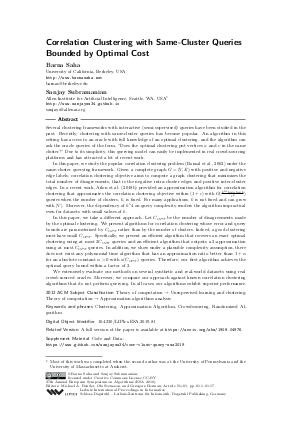LIPIcs.ESA.2019.81.pdf
- Filesize: 0.53 MB
- 17 pages

 Creative Commons Attribution 3.0 Unported license
Creative Commons Attribution 3.0 Unported license





















Feedback for Dagstuhl Publishing